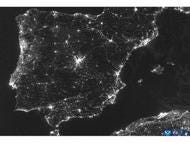Grid & Inertia
More questions than answers.
The recent blackout on the Iberian Peninsula was apparently triggered by an as yet unidentified “event” on the Spanish grid, which was being powered by approximately 70% renewable generation, mostly solar, which provides no inertia to the grid. It appears that the combination of conventional generation on the grid and the power provided by the interconnection to the French grid did not provide sufficient inertia to carry the grid through the “event” and the grid shut down when it exceeded either voltage or frequency tolerance limits.
This blackout has raised numerous questions about the stability and resilience of renewable powered grids. These questions include:
Can a renewable plus storage grid operate reliably and stably?
What is the maximum percentage of renewables consistent with reliability?
Is there a maximum percentage of solar generation on a reliable grid?
Is there a maximum percentage of wind generation on a reliable grid?
Does a reliable grid require inertia; and, if so, how much?
Is the physical location of the inertia sources on the grid important?
What is the relative inertia contribution of steam turbines vs. gas turbines?
What would be the inertia contributions of small modular nuclear generators?
What is the effect of modulated output on inertia contribution?
What effect does grid-scale storage have on inertia?
Can inertia be effectively provided electronically?
The first question is the most fundamental. It cannot currently be answered based on observation, since there are currently no 100% renewable plus storage grids. Grid reliability concerns have continued to grow as the percentage of renewable generation on grids has increased. These concerns have been magnified as conventional generating capacity on these grids has been retired, reducing capacity reserve margins and inertial capacity.
The Spanish grid is one of the most renewable dependent grids. This blackout suggests that the Spanish grid might have reached or exceeded the maximum percentage of renewables or the maximum percentage of solar on the grid without the application of grid-forming inverters and expanded battery storage capacity.
Conventionally powered grids are powered by multiple steam and gas turbine generators which provide inertia. This inertia is frequently relied upon when there is a system “event” which affects voltage or frequency on the grid. Operation of renewable grids presents additional challenges, as both solar and wind generator output can transition rapidly from full rating plate capacity output to very low or zero output. Grid-scale battery storage can respond rapidly to changes in generator output, but its contribution to inertia is uncertain, especially since current grid-scale battery storage is very limited relative to the rating plate capacity of existing renewable generators.
It is likely that the location of either conventional generation or grid-scale battery storage capacity relative to the location of the “event” and the capacity of the grid between the inertia source and the disturbance “event” would affect the ability of the grid to survive the event. This might represent an advantage for the application of small modular nuclear generators as they would likely be located at a larger number of locations distributed throughout the grid service area.
Originally published here.


Any responsible electrical engineer could have predicted the risk associated with a lack of grid inertia and would have recommended a threshold limit on renewables. This did not fit with the net zero myth so it has been ignored. This demonstrates how idealogical narratives influence mankind.
These are all good questions Ed. For well over a year, Californians for Green Nuclear Power (CGNP) has been working to answer them. Based on our analysis, the California electric power grid is very close to a harmful "tipping point." In 2022, one quarter of all significant electric power outages occurred in California. One of the contributing factors is the large amount of inverter-based resources (solar, wind, and batteries) that contribute negligible amounts of synchronous grid inertia to the California power grid.. Sufficient SGI is required to maintain grid frequency stability. Here are a pair of relevant articles from CGNP's GreenNUKE Substack:
From March 4, 2024, "Why is Grid Inertia Important? Without sufficient synchronous grid inertia, the grid becomes unstable and a blackout occurs."
https://greennuke.substack.com/p/why-is-grid-inertia-important
From July 8, 2025: "The Spanish Version of the 'Duck Curve' is a real killer - This curve underscores the problem of insufficient synchronous grid inertia in Spain on April 28, 2025"
https://greennuke.substack.com/p/the-spanish-version-of-the-duck-curve
As a public interest Intervenor, CGNP is raising these important points with the California Public Utilities Commission in the current Diablo Canyon Proceeding. Our most recent filing was accepted for adjudication on July 11, 2025.
https://docs.cpuc.ca.gov/PublishedDocs/Efile/G000/M572/K574/572574480.PDF